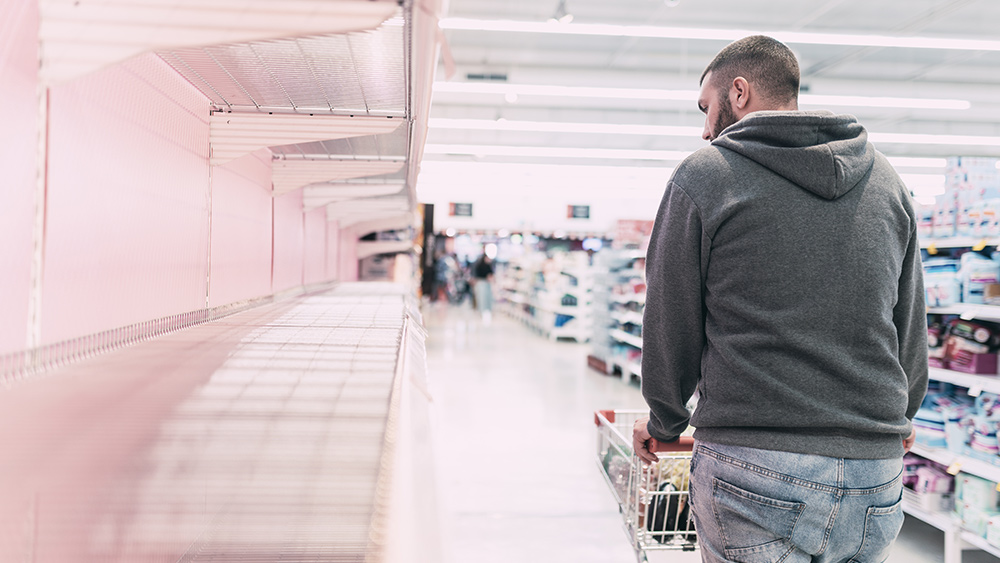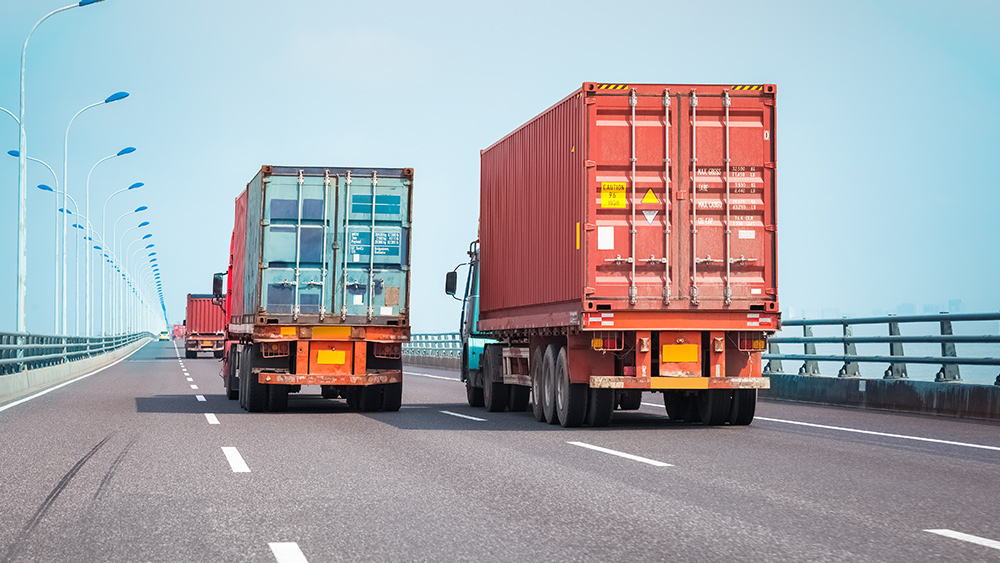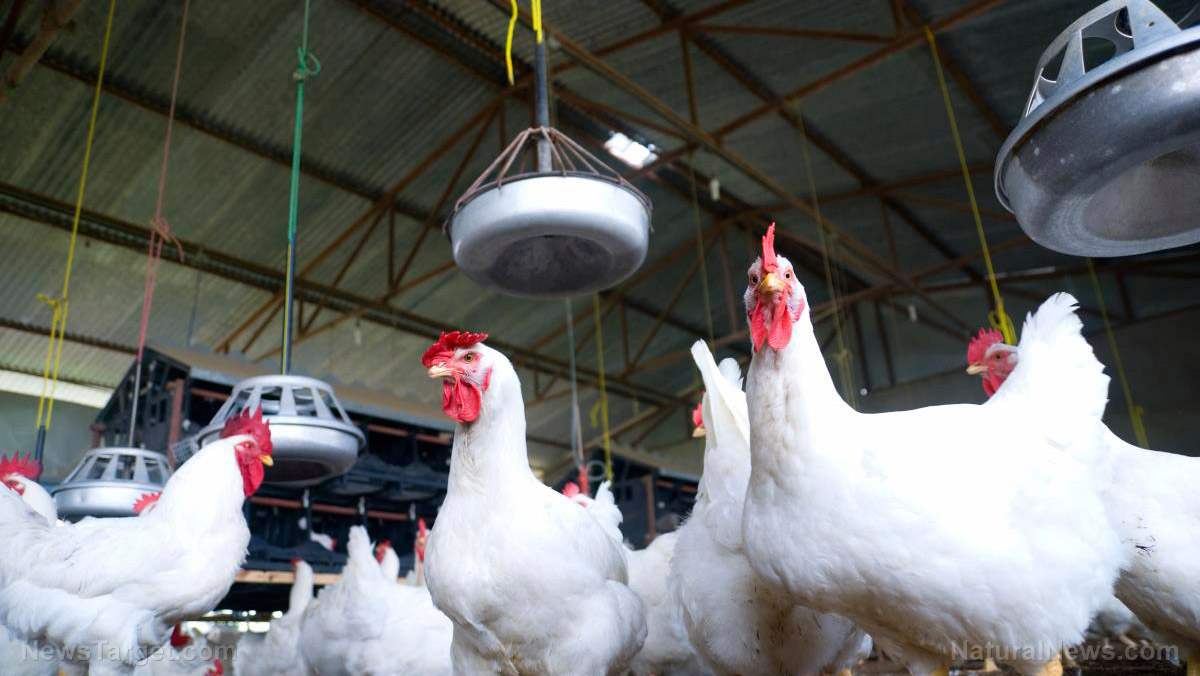Products that will be harder to find as supply issues persist
02/17/2022 / By Mary Villareal

Despite signs of a return to pre-pandemic normalcy in 2021, supply issues in grocery stores are still evident at the start of 2022. The shortages are scattered, with certain products becoming harder to find as supply issues persist.
Katie Denis, vice president of research for the Consumer Brands Association, said the situation is not widespread. “It’s not like at the beginning of the pandemic when people went out and cleared shelves to stockpile and panicked.”
But there are specific products that are feeling the strain more strongly than others due to labor shortages and supply chain issues from food manufacturers to grocery stores.
Products stores are running short on
Some products are harder to find than others during grocery runs. These include:
Canned goods – Manufacturers continue to face an aluminum shortage, which has continued during the Wuhan coronavirus (COVID-19) pandemic. Reduced supplies of products like canned vegetables and soda will likely continue in the next few months.
Eggs and meat – News of a chicken shortage resulted in fast-foods cutting back on chicken items last spring. This shortage also moved over to grocery stores in the fall. Grocery chain CEO John Catsimatidis warned that the ongoing supply chain issues could affect the supply of meat and eggs across the country. Already, there are parts of the U.S. that are seeing rising prices of poultry and eggs due to high demand.
Lunchables – School and work are back in full swing in many states, and Lunchables simply flew out of the shelf. Kraft announced in 2020 that it will be keeping Lunchables on shelves despite cutting many of its products. However, it seems that the company is having a hard time keeping up with the increased demand. (Related: FEMA simulation warns unstable food supply may cause 395% spike in food prices across America.)
Juice boxes – Smaller apple and orange crops, as well as packing and supply issues, have led to shortages of many juice brands. The U.S. Department of Agriculture (USDA) also said the unfavorable conditions and citrus diseases have damaged orange harvests. The USDA expects Florida to produce only about 45 million juice boxes of oranges, the smallest harvest ever produced by the state in nearly 80 years.
Baby formula – Brands like Enfamil, Similac and Gerber are becoming harder to find as grocery shelves turn up empty due to supply chain issues, which are still being addressed. It is usually okay for babies to switch to any available formula, unless the baby is on a specific extensively hydrolyzed one such as Alimentum or Nutramigen. Milk alternatives are also not recommended for infants under six months old, and toddler formulas are not recommended for infants.
Liquor – Champagne demand fell in 2020 and then rose again in 2021. This created a problem with the Comité Interprofessionnel du vin de Champagne, a trade organization for the Champagne region that set a lower production cap on the reduced demand. Supply chain issues also compounded the problem.
Potatoes – There is a global shortage of potatoes, with franchises like McDonald’s and KFC running out of fries. McDonald’s in Japan are now restricting fries to smaller sizes. Potato chips are also in short supply, with makers in South Africa warning that supply issues and low local crop yields from bad weather have cut their production. (Related: Food shortages are widespread and have gotten worse during the pandemic.)
Jim Dudlicek, a representative from the National Grocers Association, said the recent omicron surge has led to more employees calling in sick, which affects the supply chain as well as the grocery stores. The supply is also affected because more people are cooking and eating at home, a trend that started at the onset of the pandemic.
However, Denis believes there’s no reason for people to resort to panic buying, as supplies could rebound in a few months. Purchase limits on products at stores mean that retailers are being responsible and managing their inventory. Denis said if people can buy what they need, and only what they need, then there should be enough for everyone.
More related stories:
Food shortage around the world may have been engineered to control populations.
Shortage of key fertilizer ingredient threatens Aussie food supply chain.
China buying up American corn due to flooding, creating food shortage crisis.
Labor shortage and rising food prices force Vanceboro couple to close restaurant.
Watch the video below to learn more about food shortages.
This video is from The Prophecy Club channel on Brighteon.com.
Follow Collapse.news for more updates.
Sources include:
Submit a correction >>
Tagged Under:
chaos, Collapse, crisis, food collapse, food shortages, food supply, grocery, labor shortages, packaging problems, pandemic, panic, products, supply chain
This article may contain statements that reflect the opinion of the author
RECENT NEWS & ARTICLES
COPYRIGHT © 2018 PANIC.NEWS
All content posted on this site is protected under Free Speech. Panic.news is not responsible for content written by contributing authors. The information on this site is provided for educational and entertainment purposes only. It is not intended as a substitute for professional advice of any kind. Panic.news assumes no responsibility for the use or misuse of this material. All trademarks, registered trademarks and service marks mentioned on this site are the property of their respective owners.





















